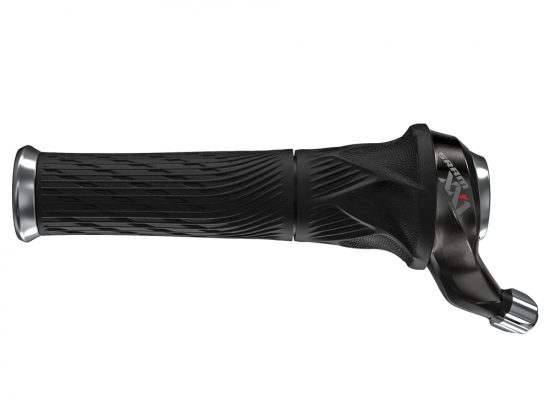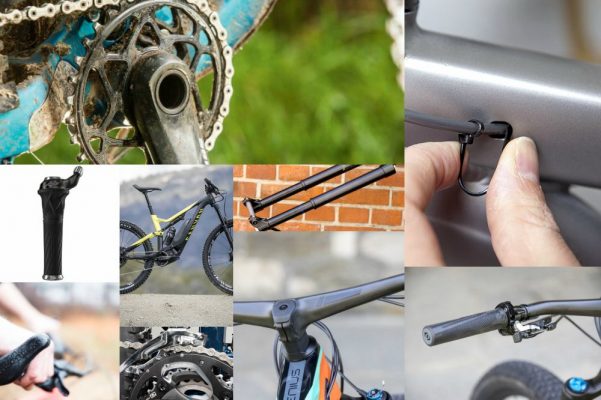It's 2021 people
Which of the following things should be killed off? Which should be given a stay of execution? Here’s our rundown of ten controversial components.
>>> 12 things you’ll remember if you were a mountain biker in the 90s
Now then. Some of these products should still be around. There are products whose time is arguably yet to come. Products that came along too early for manufacturing technology – or the MTB public – to deal with. But in this list are also products that should never have been born in the first place, let alone still existing in 2019.

The Intend Edge 27.5
1. Inverted suspension forks
Kicking things off is the upside down fork. The perfect example of the theory being better than execution. The theory being that inverted forks offer two advantages: reduced unsprung mass and better lubrication (seals permanently sitting in lube). Inverted forks should be the supplest forks possible basically. So what’s been the problem? In a word, stiffness. Getting decent lateral stiffness and stiffness under braking has proved elusive – especially with single crown designs and non-bolt axles. But you know what? We’d love to see an inverted triple clamp enduro fork with a burly bolt-axle design. Maybe its time truly has come? Check out what micro-brand Intend are up to.

2. Internal cabling
What problem is this solving? We can certainly name several problems that internal cabling is introducing! It’s not just about the extra frustration of maintenance (or higher bike shop workshop bills), although the headaches and aggro of servicing internal cabling is the worst aspect, let’s not forget how noisy internal cabling can be. Sure, it makes look a bit nicer but that novelty quickly fades when you’re into the third hour of listening to your bike click, rattle and ping its way around the trails.

3. Front mech
Remember these? SRAM have clearly stated an intention to rid the world of front mechs. Shimano aren’t quite so bold, despite the ever-trickling down of 1x technology to their lower tier drivetrains. Truth be told there are problems with 1x systems. Namely, you can’t have low unsprung mass and a wide gear range. It’s an either/or thing. In the real world though, everyone is prepared to put up with the limitations of 1x because of the increase in reliability and lack of clatter noise. Heck, even roadies are going 1x in droves now.

4. Gripshift
Where Shimano cling on to the front mech, SRAM cling on to Gripshift. Believe it or not, you can still get Gripshift option groupsets from SRAM. Why? They are flipping well light, that’s why. Aside from weight weenies though we’re seeing Gripshift units appearing on enduro racers’ bikes. Why? Well, it’s not for changing gear. They’re using Gripshift units to operate suspension lockouts. Speaking of which…

5. Suspension lockout
It appears the mountain bike world is giving up on the concept of set and forget. Suspension adjustment and lockout remotes are only going to get more and more prevalent on modern bikes. You can either see this as a failure of the industry to come up with an implementable truly do-it-all suspension damping system. Or a sad indictment of how the general MTBing public don’t know how to setup or adjust their own bike’s suspension. Or you can see it as finally accepting that bikes need to behave in different ways at different times. One things for sure, it’s going to mean you end up accidentally riding in the wrong setting a lot.

6. Bar ends

7. One-piece bar and stem
If you’re old enough to remember the early days of mountain biking you might remember seeing one-piece stem and bar designs. Some Specialized bikes used to have them. Ritchey made the infamous Bullmouse combo. Thanks to Scott/Syncros, those days are back. Well, not quite. The new one-piece Syncros Hixon IC SL stem/bar design is actually pretty cool and desirable. Which is not something you can say of the old Bullmoose.

8. Oval chainrings
The promise remains the same as ever: reducing/eliminating the ‘dead spot’ in your pedal stroke. Do they work? First things first, the old, original oval rings from the 90s did not work. What about the new ones? Read our review of the Absolute Black Oval chainring.
9. Coil springs
The jury may still be out on which is actually fastest (air shocks keep upsetting folks by being quicker against the clock a lot of the time) but there’s one thing that is hard to argue against: coil feels better. And for most people, that’s actually why we ride bikes isn’t it?

10. Mismatched wheel size
Calm down, calm down… don’t worry there isn’t a new wheel size on the way (well, last time we checked our inbox anyway). BUT there are murmurings that we are about to see a new peril unleashed upon us: bikes with different size wheels front and rear. Brought about by the new wave of bikes that can be run with either 29in wheels or 27.5+ wheels, there have been plenty of bike industry folk running 29in up front and 27.5+ out back. And then along came the Canyon Spectral:ON. Prepare yourself for the era of mullet mountain bikes. We’ve had these before. Trek and Gary Fisher did the 69er bikes. Liteville are another brand offering mismatched models.




